|
|
-
« back
The church organ of Beatenberg
- Organs from 1812 until today
- Technical details
- » Organ sound examples
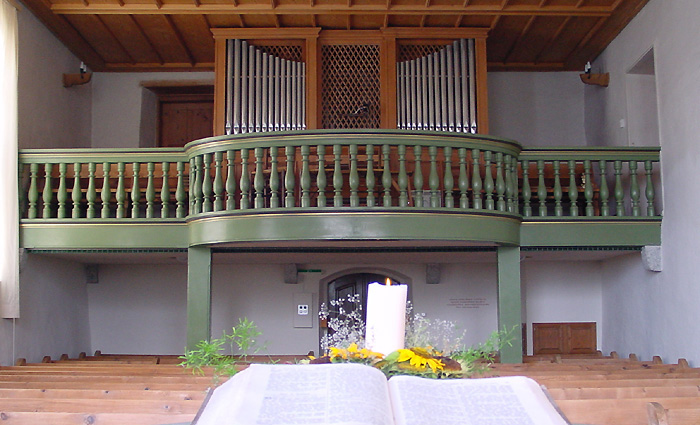
The church organ today
13 stops / manufactured by Metzler Dietikon 1950
The church organs of Beatenberg (1820 - 2009)
before 1812
Chamber organ
1812
The organ from the church in Eriswil was put in
1903
Organ builder Zimmermann built a new organ with 9 stops (picture below).
The organ stood at the front of the church.
The old instrument was sold to Paris.
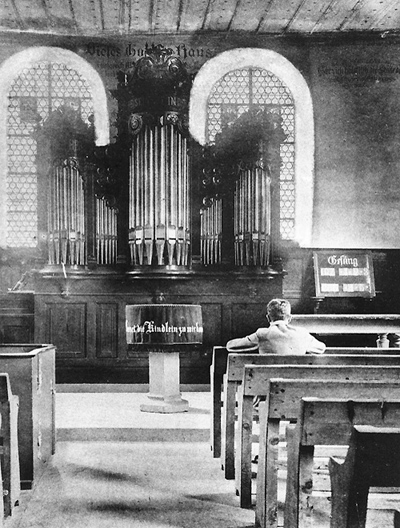
1903 - Organ with 9 Stops
1918
Goll builds a new pneumatic organ with 8 stops.
This organ came on the left side wall
(unfortunately we haven’t found any pictures).
The old organ went to the church in Lyss and later to Döttingen AG.
1950
Metzler Dietikon builds the new organ (the present one) with 13 stops.
It was financed by interest free credits by parishioners.
|
About the present organ

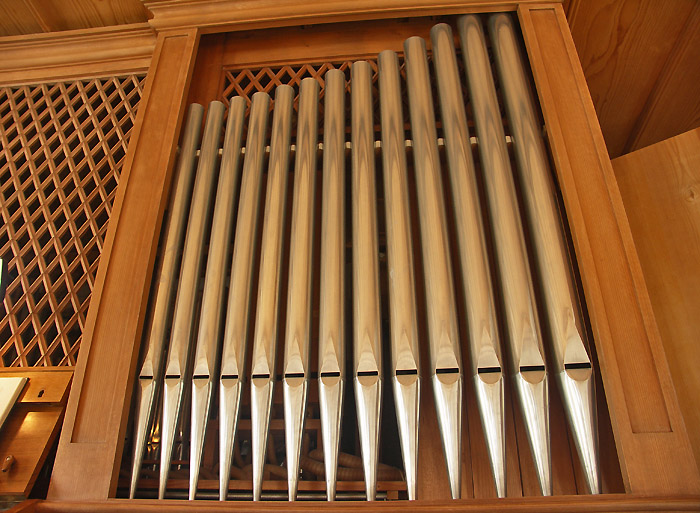
The pipes on the right
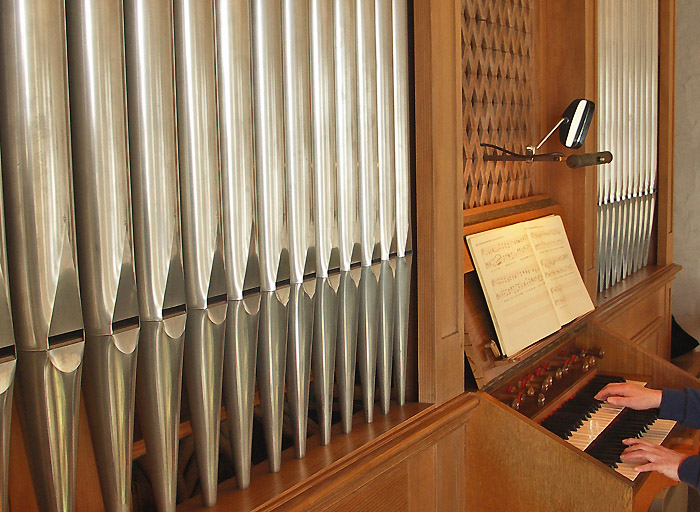
The pipe organ is a keyboard musical instrument that produces sound by venting mechanically compressed air (wind) through resonant pipes. Each pipe produces sound of one fixed pitch, so they are provided in sets with one pipe or more per note, each set or stop having a common timbre and loudness throughout. Most organs have multiple sets of pipes of differing timbre, pitch and loudness which the player can employ singly or in combination. A pipe organ may have one or several keyboards, played by the hands, and a pedalboard for bass notes, played by the feet, each of which controls its own group of stops. Source: Wikipedia
The wind system
Contains the parts which producestore and deliver wind to the pipes.
|
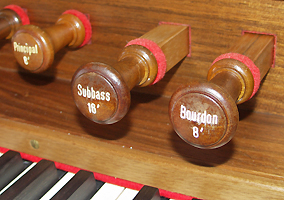 |
Stops pedalboard:
Subbass 16' und Bourdon 8'
|
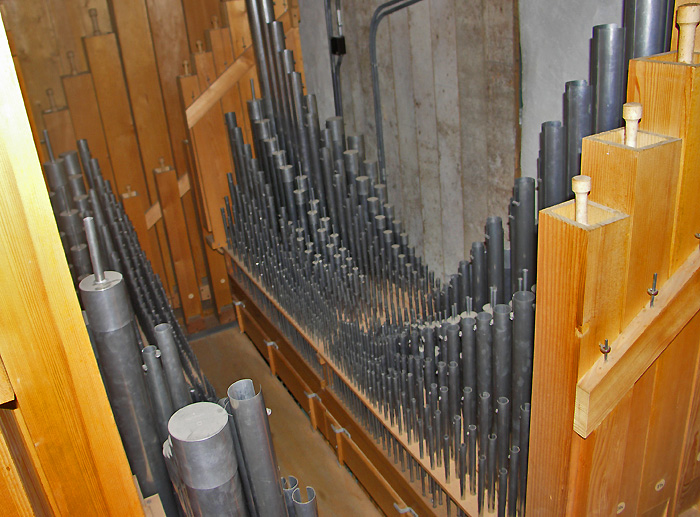
A small part of the 900 pipes
Gedackt (also spelled gedeckt) is the name of a family of stops in pipe organ building. They are one of the most common types of organ flue pipe. The name is a German word, meaning "capped" or "covered".
Gedackt pipes can be made of either wood or metal, but in modern organ building, and the majority of historical examples, they are made of wood. They are occasionally square, but much more commonly rectangular in cross-section, the mouth being on the narrow side of the pipe. The mouth has a high cut-up (height to width ratio) to produce the fluty tone. Gedackt is a stopped pipe, as its name implies.
The gedackt produces a moderately soft, bland, flute-like tone, invaluable for basic ensemble sound in the pipe organ. The stoppered design eliminates many high overtones, leaving the classic sound of the gedackt, which blends seamlessly with almost all other stops. It is similar in sound to the bourdon, but is usually softer and somewhat sweeter in tone. The bourdon´s heavier construction and square-walled pipes gives it a more pronounced and weighty tone. Source: Wikipedia
|
|
|
Principal, flutewood, chimney flute, quintize, open and gedackt
|
Proportions
Organ pipes - person (in foot)
|
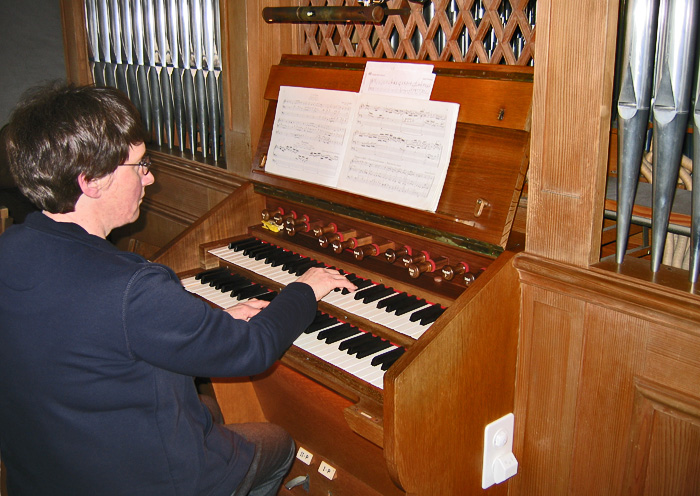
Sound examples by Therese Jordi
 » Start organ sound
» Start organ sound
A small sound example of Hermann Schwander
playing the organ and further information (in German only) about him
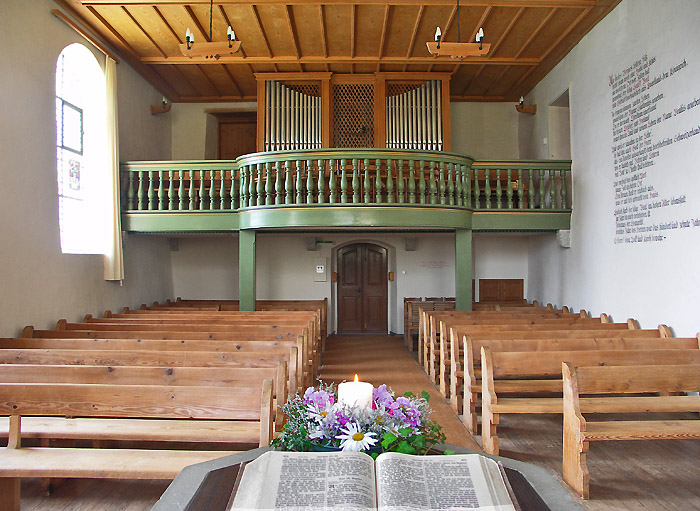
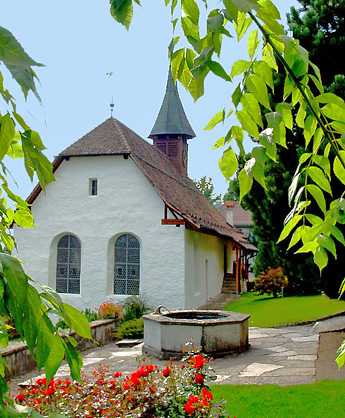 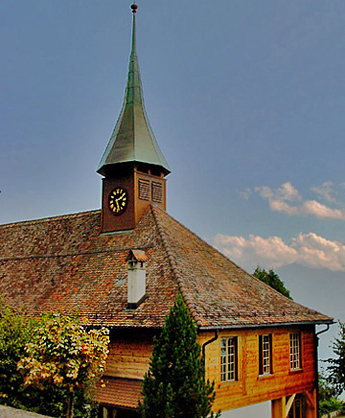
The church in 2007

Sound recording and photos by Heinz Rieder
I would like to thank Bethli Wyssen, Therese Jordi,
Greti Schwander and Kurt Schmocker for their support with building this page.
Concept: Fritz Bieri and Heinz Rieder copyright © http://www.beatenbergbilder.ch
Language translation: Barbara Stephenson-Berger / Organization: Michael Künzi, Tourist-Center Beatenberg
Website and image editing: Heinz Rieder

|
|